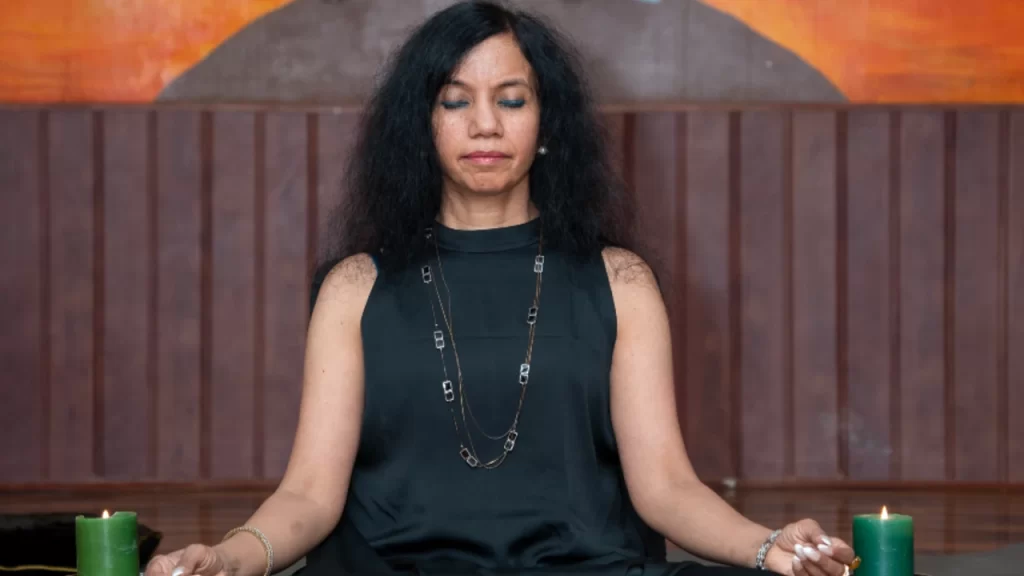The mudras are symbolic hand gestures which are widely used in yoga and meditation to channel the flow of energy within the body. While one practices different mudras for meditation, one balances the elements of air, water, fire, earth, and ether that exist within us and even contributes towards a sense of physical, mental, and spiritual well-being. When you practice mudras you activate different parts of your brain and body, creating a vibrant interaction between your mind and the flow of energy. In many yoga and meditation practices, there are Different Mudras for Meditation, which expand mental clarity and emotional resilience. They are easy to do but robust towards the mind-body connection.
They believed that mudras guide prana, or life energy, throughout the body. These sacred gestures not only support meditation but also align you with universal consciousness. Knowing these mudras can facilitate leading you to deeper states of awareness and mindfulness.
The Role of Mudras in Meditation and Yoga
Mudras play an important role in redirecting the prana or the life force and developing concentration. Every mudra activates specific energy circuits, whereas it links the physical as well as emotional states. You can either practice the ancient forms of yoga or the Anapana Meditation; in any case, mudras can greatly affect mindfulness and emotional balance.
What Are Mudras? The Power of Hand Gestures in Meditation
In Sanskrit, the term mudras means “gesture” or “seal.” Mudras are extremely crucial in Different Mudras for Meditation. The gestures are said to direct the flow of energy through the body into a form of alignment with the mind and spirits.
Mudras throughout the Ages and Ancient Yogic Traditions
The Importance of Mudras in Meditation and Yoga
Though Mudras are symbolic per se, they are not just a symbol but also have a practical role in Different Mudras for Meditation that helps the meditator to regulate and concentrate their energy to bring mental clarity.
Top 10 Different Mudras for Meditation and Their Benefits
Now, let’s see Most Practiced Different Mudras for Meditation and their benefits, so you can easily choose the best mudra for your practice.
Knowledge Gyan Mudra: Conscious focus and wisdom, suitable for students who require mental clarity.
Shuni Mudra of Patience: This mudra recommends calmness and emotional balance. Shuni is generally used to create discipline.
Prana Mudra of Life: energizes, rejuvenates the body, and strengthens the immunity and controls stress.
Dhyana Mudra of Meditation: Suggests that the soul has relaxed itself and gone into a spiritual awakening.
Apana Mudra of Purification: Helps purify toxins stored in the body and cleanses the emotional system.
Anjali Mudra (Mudra of Gratitude): It is the traditional gesture of worship and encourages compassion and humility.
Surya Mudra (Mudra of the Sun): It activates the digestive system and helps increase metabolism.
Buddhi Mudra (Mudra of Mental Clarity): Improves communication or understanding.
Vayu Mudra (Mudra of Air): Suitable for all imbalances of air in the body, and it reduces stress.
Hakini Mudra (Mudra of the Mind): It builds concentration, memory, and clarity.
All of these different mudras if meditation have their purpose and may be adjusted according to specific spiritual aims or mental needs.
The Science Behind Mudras and Energy Flow
Scientific research has shown that mudras are impacting neural pathways and rising mental states. Mudras stimulate the electromagnetic field of the brain that further impacts emotional well-being. In one study, it was discovered that mudras decrease the levels of stress up to 40% (source). This is a very practical application in the realm of alchemy energy healing as well as life coaching.
How to Practice Different Mudras for Meditation
Define intention: Determine the type of energy you want to generate, like peace in your being or emotional healing.
Place your fingers: Make sure your fingers are appropriately placed to flow the energy in the correct way.
Breathe deeply: With every mudra, control the breathing for greater effectiveness.
Consistency is the key: Practice these mudras daily for 5–10 minutes for best results.
Benefits of Practicing Different Mudras for Meditation
Practicing these Different Mudras for Meditation offers various mental, emotional, and physical benefits, such as:
Relieve tension; it calms down the person by soothing his nervous system.
Improved concentration: Concentration or focus improves and one can improve on aspects like studying and decision-making. It balances and regulates the flow of energy, resulting in emotional balance and managing emotion.
Physical recovery: Some of the mudras like Prana Mudra boost energy and health and, thus are important for stone therapy in healing.
Combining Mudras with Other Healing Practices
The power of mudras can be added to holistic practices such as alchemy energy healing and healing stone therapy in order to amplify the effects. For instance, Gyan Mudra makes spiritual and intellectual growth both improved along with healing stone therapy.
How Life Coach India Recommends Using Mudras for Mindfulness
Life coaches often recommend integrative mudras with meditation to enhance mindfulness and personal growth. Among its effectiveness for mind and self-awareness, the effectiveness of mudras for emotions is highly considered by life coaches in India.
How to Choose the Right Mudra for Your Meditation Practice
The right Different Mudras for Meditation can make all the difference for your practice. Here’s how you can determine which mudra works well for you.
- The role of intent behind every action.
- Aligning mudras with meditation goals.
- For instance, one can modify the mudras according to their flow of energy and mind state.
How to Incorporate Mudras in Your Daily Meditation Routine
Master the different mudras for meditation. It is an essential aspect of meditating. To understand and inculcate mudras in your daily schedule, you need to learn these simple steps of mudras for meditation. Start by finding a quiet place for meditation and sitting comfortably in a relaxed position to meditate.
- As you maintain this gesture, practice mindful breathing.
- Be conscious of your intention for the meditation session.
- Make a mudra according to your emotions or your desire.
Metrics on the Popularity of Mudras in Meditation
Recently, a survey revealed that as many as 70% of yoga practitioners apply mudras in everyday life for the purpose of deepening the practice of meditation and, therefore, keep them on the spiritual path. Additionally, 45% of respondents said they began to gain a better mental clarity after practicing Different Mudras for Meditation within just two weeks (source). It also goes without saying that mudras are becoming more and more fashionable in modern spiritual life practices.
Conclusion
Many different mudras for meditation can be integrated into meditation practice to transform your mental and physical well-being. From healing emotional issues to improving concentration, spiritually growth, mudra is a simple tool for inner achievement. Practicing alchemy energy healing or even life coaching, healing stones therapy and family constellation, mudra can facilitate comprehensive personal change.
FAQs
How do mudras enhance meditation practice?
Mudras create a concrete gesture by the hands, thereby guiding and balancing the elements flowing within the body for better concentration and emotional control during meditation. This increased interface between the mind and the body leads to enhanced concentration and relaxation.
Can anyone practice different mudras during meditation?
Yes, anyone can practice Different Mudras for Meditation at any level. However, proper techniques are required to produce each mudra to reap benefits that may include heightened concentration, emotional equanimity, and relief from stress.
How long should I hold a mudra during meditation?
You should maintain each of the mudras for 5-10 minutes for complete benefits during your practice. The beauty of the mudras is that consistency will build their value in bringing about physical and emotional results in your life.
Are mudras linked to other healing practices like life coaching or energy healing?
Yes, absolutely; mudras can add to alchemy energy healing, coaching for life, healing stone therapy, among others, holistic practice. They make such holistic practices more potent as they help to clear one’s mind, seek emotional healing, and improve spiritually.







Leave a Reply